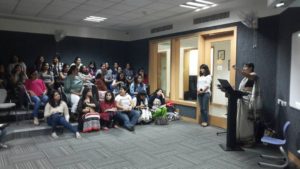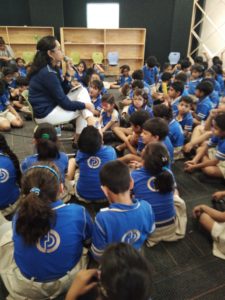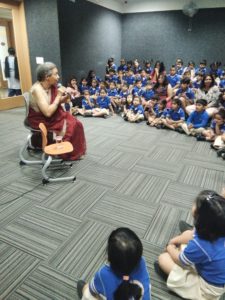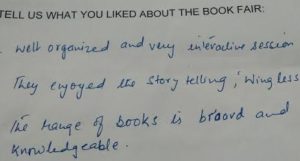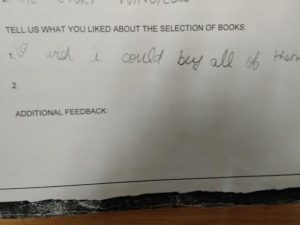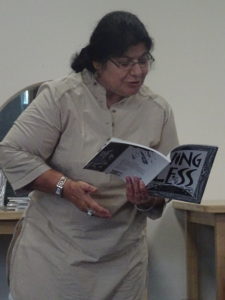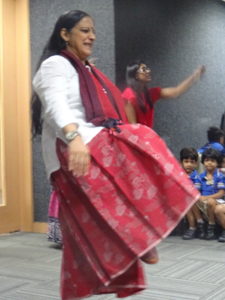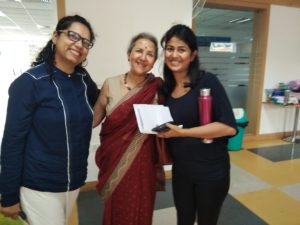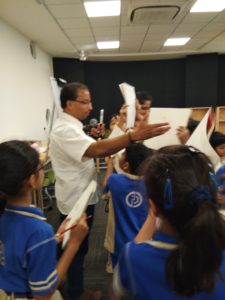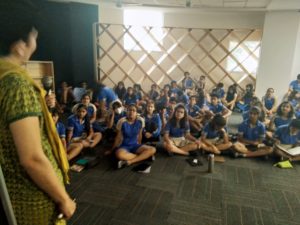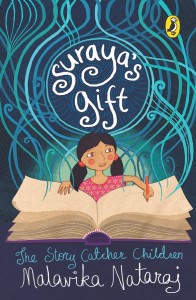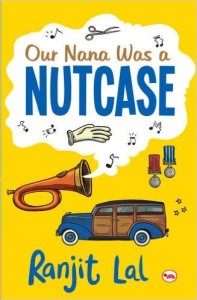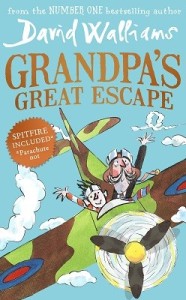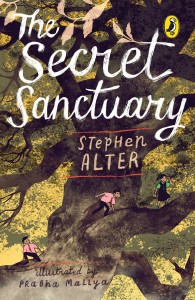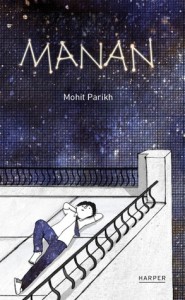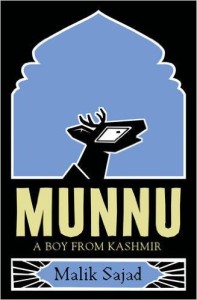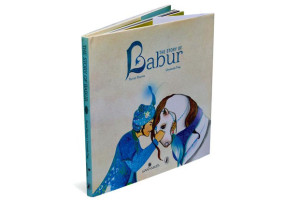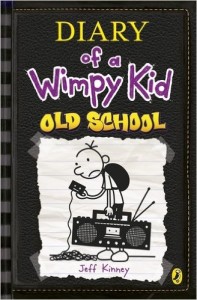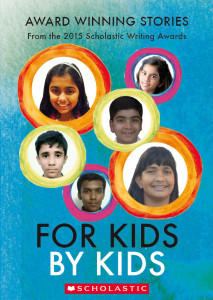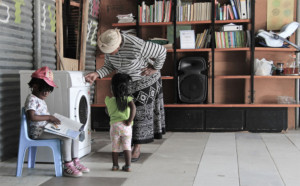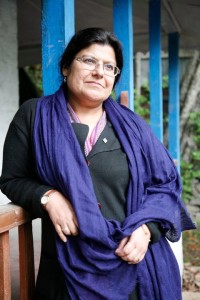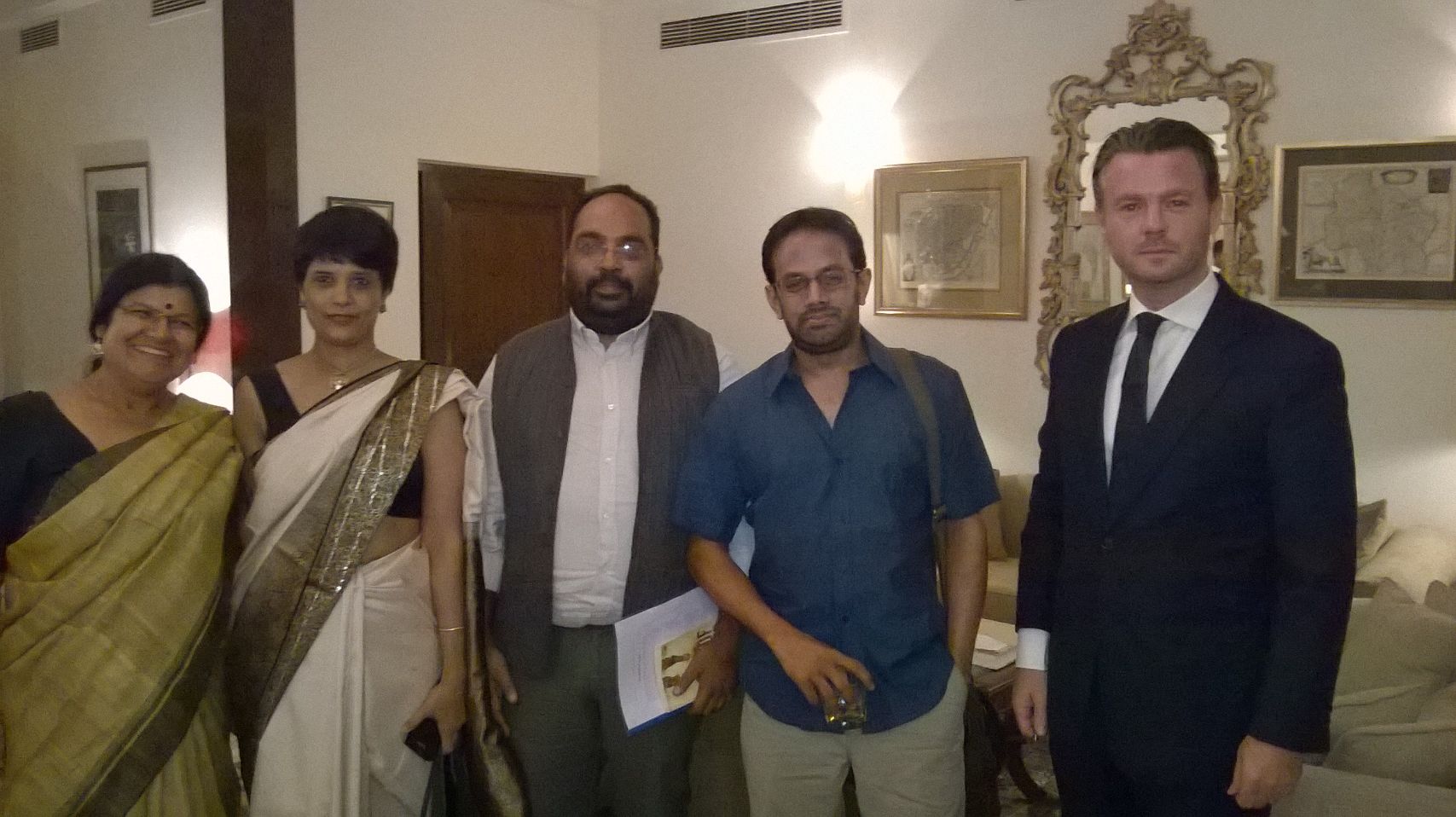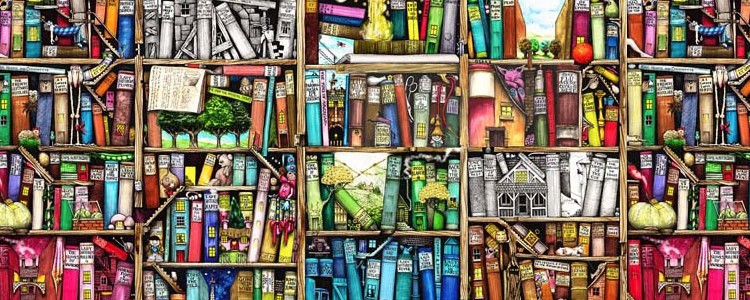Kunskapsskolan Book Week ( 1-5 May 2017)
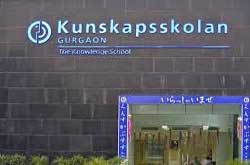 I was invited by Kunskapsskolan Gurgaon to curate their book week. They have nearly 1200 students. The book week had to be created for all grades from pre-Nursery to Form 10. Since it has been recently established in India the classes are bottom-heavy with a larger number of students in primary school. Also the teaching staff is young, energetic and eager to learn new ways of learning particularly using technology.
I was invited by Kunskapsskolan Gurgaon to curate their book week. They have nearly 1200 students. The book week had to be created for all grades from pre-Nursery to Form 10. Since it has been recently established in India the classes are bottom-heavy with a larger number of students in primary school. Also the teaching staff is young, energetic and eager to learn new ways of learning particularly using technology.
Kunskapsskolan has been established in India via a joint venture partnership between Sweden and India. The schools follow the KED programme whose motto is: “Personalize each student’s education according to their individual needs and abilities. All resources in the school are carefully designed and organized around the student in a complete and coherent system.” Another characteristic of Kunskapsskolan schools is to align themselves with the educational system approved by the government of the country they are establishing schools in. So in India they are recognised by the CBSE board. Having said that they implement the curriculum using theme-based learning and from grades 3-8 it is primarily using digital resources. A unique aspect of Kunskapsskolan is its inclusive policy to have students with behavioural and learning challenges. There is a department that has skilled educators and councillors who are instrumental in the integration of these special children with rest of the school community.
Given the interesting mix of students with varying capabilities and incorporating the simple mandate of the school 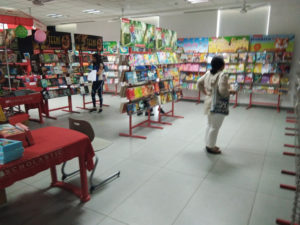 management — “By making a qualitative difference to the school community by immersing everyone in a world of books. It is also to introduce children to the love of reading via various methodologies and a well-curated book exhibition.” It was decided to hold the book week along with Scholastic India. With ninety-five years experience of publishing for children worldwide, of those
management — “By making a qualitative difference to the school community by immersing everyone in a world of books. It is also to introduce children to the love of reading via various methodologies and a well-curated book exhibition.” It was decided to hold the book week along with Scholastic India. With ninety-five years experience of publishing for children worldwide, of those 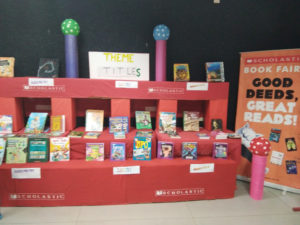 twenty in India, Scholastic India is equipped to meet the requirements of the school. For instance putting together a theme-based book fair, introduction to audiobooks, ebooks and levelled readers for students such as Book Flix ( primary) and LitPro ( middle and secondary).
twenty in India, Scholastic India is equipped to meet the requirements of the school. For instance putting together a theme-based book fair, introduction to audiobooks, ebooks and levelled readers for students such as Book Flix ( primary) and LitPro ( middle and secondary).
The book week began with a workshop for the school teachers on the “promotion of reading and digital resources”. I led two workshops. First for early years and primary school teachers. The second one was for middle and secondary school teachers. The emphasis was on importance of reading as a lifelong skill to acquire and not just to complete school curriculum. Given that this is the information age where its imperative to know how to read and glean
knowledge, reading as an activity has to be enjoyable. It has to inculcate a love for reading without making it a chore. Today there are multiple formats by which children can access books for pleasure and information. According to Kids & Family Reading Report 2016 (KFRR ) children prefer reading for fun and helps develop a fondness for the activity. Parents too agreed that reading is important.
- 86% of kids interviewed said their favourite books – the ones they were likely to finish – were the ones they pick out themselves. This is close to the USA average of 93%.
- Across all ages, an overwhelming majority of children (87%) say they would read more if they could find more books that they like.
- Children and parents prefer curated selections as it is easier to discover books. The top sources of books are the school book fairs, book clubs and word-of-mouth recommendations. Libraries and bookshops are a close second.
The teachers were introduced to online digital resources ( free and subscription based) that were age-appropriate and supported their curriculum. The workshops had been customised to align with KED methodology. So though the focuse was on resources available online many scrumptious examples of print books were also shared to gasps of astonished delight. A teacher who works primarily with children who have learning disabilities wrote in later to say “I simply loved the session!”
Something similar was witnessed at the Kunskapsskolan Book Week.
On the first day two little tiddlers hurtled down the stairs breathless with excitement, ” This book fair is awesome! The collection is so good!”
Every single day there were sessions with authors, illustrators, storytellers, dramatists, cartoonists and editors. The idea being to introduce children to different aspects of books and reading. There were even sessions planned around audio books and animations based on popular stories as with Book Flix. Unfortunately due to privacy issues I am unable to upload some of the magnificent pictures taken during the events. Children, irrespective of whether they were toddlers or young adults, were mesmerised by the sessions. I have pictures of children who were trooped into the sessions and sat very quietly not knowing what to expect. Within 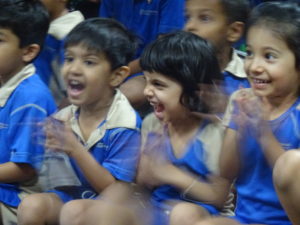 minutes of the resource people beginning we had children absorbed listening to the stories in wide-eyed wonder, small or big the students were sprawled across the carpets, some were sitting under classroom desks and peering out, others were clapping their hands in glee and yet others body language was a delight to watch. Inevitably within minutes the students would surround the resource person and it was absolutely marvellous to watch the adult engulfed in a sea of blue with loud chirrups of happiness from the children.
minutes of the resource people beginning we had children absorbed listening to the stories in wide-eyed wonder, small or big the students were sprawled across the carpets, some were sitting under classroom desks and peering out, others were clapping their hands in glee and yet others body language was a delight to watch. Inevitably within minutes the students would surround the resource person and it was absolutely marvellous to watch the adult engulfed in a sea of blue with loud chirrups of happiness from the children.
Simi Srivastava told a deliciously onomatopoeic tale about a bear. It was narrated accompanied to music. It went down very well with the toddlers. After the session a little boy came and gave her a tight hug while planting a slurpy wet kiss of appreciation on her cheek. Another girl came up politely and said “It was nice” but her twinkling eyes noted her deep appreciation of the storytelling performance.
Paro Anand, an exceptional storyteller, read out aloud her brilliant 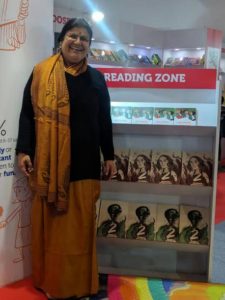 fable Wingless to a mesmerised audience of 9 and 10 year olds. ( According to KFRR, across all ages, the overwhelming majority of kids (85%) say they love(d) being read books aloud.) When she said she had written 27 books for children, a tiny little hand went up and a solemn little child said, “It means you are ‘experienced'” much to Paro’s delight.
fable Wingless to a mesmerised audience of 9 and 10 year olds. ( According to KFRR, across all ages, the overwhelming majority of kids (85%) say they love(d) being read books aloud.) When she said she had written 27 books for children, a tiny little hand went up and a solemn little child said, “It means you are ‘experienced'” much to Paro’s delight.
Later Paro Anand had a session with the senior children around her recently launched graphic novel 2. It is the first Indo-Swedish collaborative book and it was apt that the first school event was held at an Indo-Swedish school. Paro Anand has written t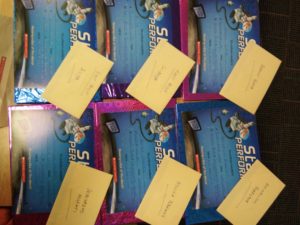 his book with Swedish writer, Örjan Persson. Her session was converted into a writing workshop too. The children were broken up into teams of two and given the task of writing stories together, aping the collaboration between the authors of 2. They were given two days to work on the stories. Three winning teams were awarded prizes along with notes of appreciation by Paro Anand.
his book with Swedish writer, Örjan Persson. Her session was converted into a writing workshop too. The children were broken up into teams of two and given the task of writing stories together, aping the collaboration between the authors of 2. They were given two days to work on the stories. Three winning teams were awarded prizes along with notes of appreciation by Paro Anand.
There were sessions planned with renowned storytellers like Anupa Lal, Anu
Singh Chowdhury conducted a session in Hindi introducing children to Gulzar’s poetry and stories, seasoned publisher-cum-author Arthy Muthana led a workshop on editing and book production wherein the children looked astonished upon hearing of the “small pile” of manuscripts waiting to be read on her desk, dramatist Vanessa Ohri had the children spellbound, and cartoonist Ajit Narayan’s infectious enthusiasm for drawing characters was palpable as children quickly sketched in their art books while he demonstrated. He was provocative with his remarks like “I still have not found the right picture” but it only spurred the children on to improve. They drew furiously and clucked around him for 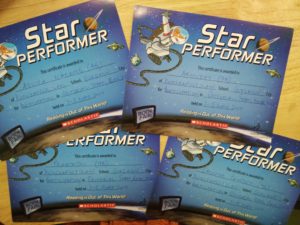 appreciation.
appreciation.
While the book week was on a team of student volunteers had banded together to form a temporary editorial team. These four senior school students were entrusted with the task of creating “books” documenting the book week. They could choose any form of narrative as long as it contained highlights of the sessions and brought in different perspectives. For this they interviewed the resource people, students and teachers to get their views too. The students chose to illustrate with line drawings and soon took photographs to accompany the text. The books are to be placed in the school library. The exercise helped give an insight into the team effort, creativity and patience required to put a book together.
By the last day I too had students smiling and greeting me. The primary school students would give a broad smile or a hug. The senior school students were a little more reserved but it did not prevent them from lurking behind pillars and popping out unexpectedly to waylay me for a chat. It was a tremendous experience and I look forward to many more such occasions.
8 May 2017
*All the pictures except for the one of the school entrance have been taken by me and posted with permission of the school management.

